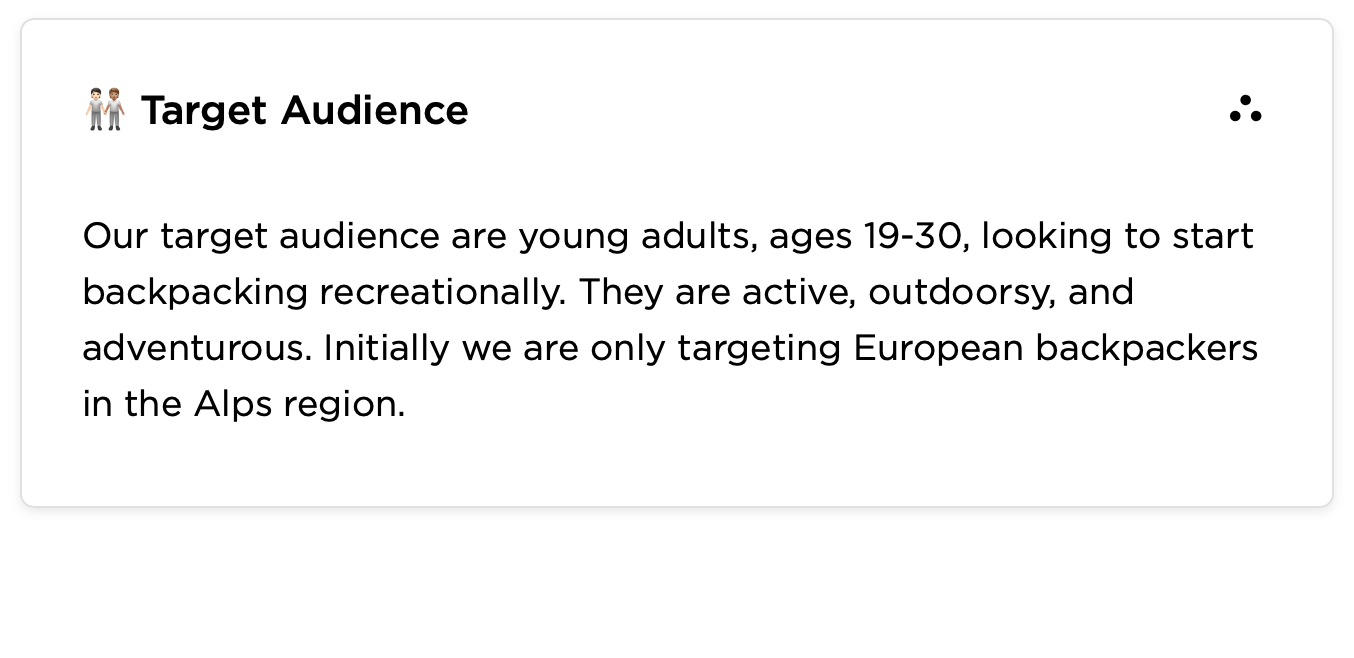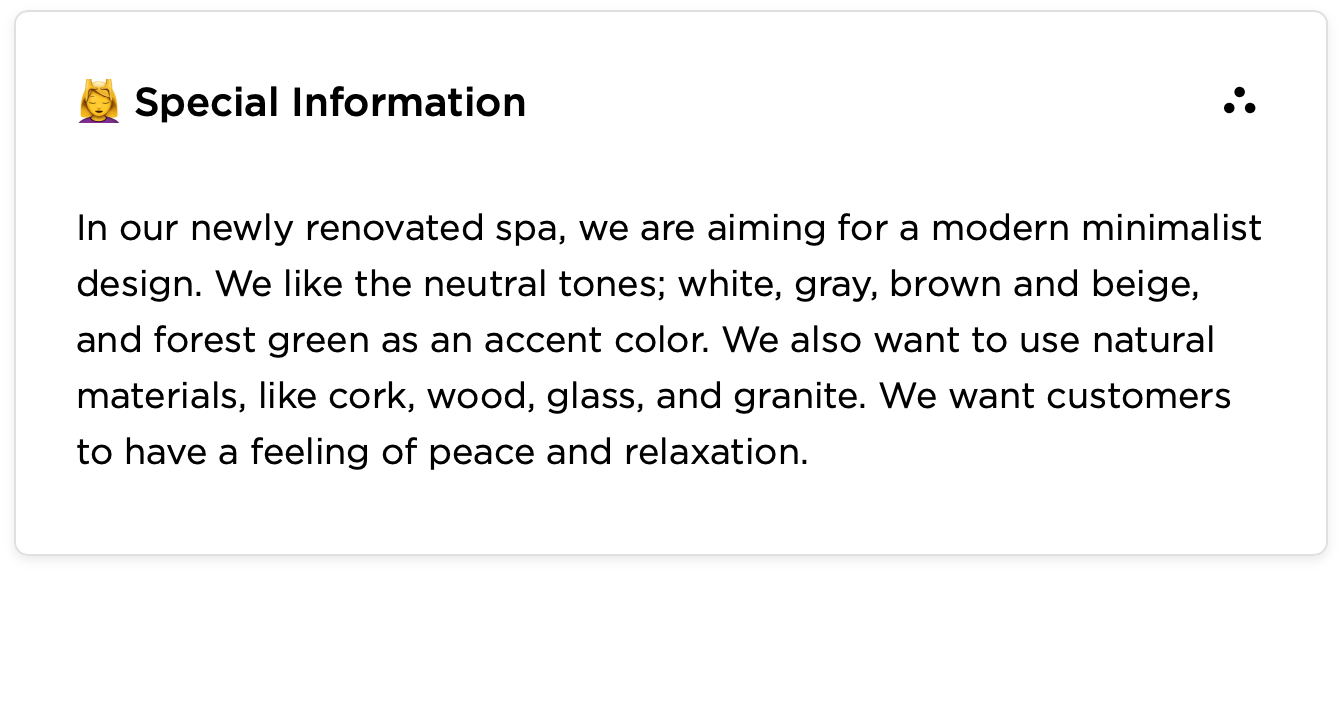How to Write a Creative Brief

Creative Briefs
Collato did some investigating to try and understand the challenges that content creators and clients face in the workplace. Our findings? Creative briefs.
It turned out that content creators are too often presented with a brief that doesn’t fully capture what the client envisions. Other times, clients won't submit a brief at all, maybe just the occasional scribbled note or unplanned phone call. Either way, creative briefs, or lack thereof, are a major source of frustration on the creator's side.
But don’t get us wrong, content creators can also be difficult to communicate with; their complex lexicon, savvy technologies, and fancy software programs can be a real brainfreeze! We understand that it’s difficult to know what creators want without any real direction.
To make this workflow better, we put together this seven-step guide to help you cook up a killer creative brief, with some questions for inspiration.
What is a creative brief?
A creative brief is a document that outlines your project expectations for a designer or a creative team. In most cases, the creative brief is written at the beginning of a project to boil down exactly what you want to accomplish; whether that’s printing an advertisement, designing a logo, or launching a website, it’s all articulated in your creative brief.
Briefs are used across a wide range of creative disciplines, including graphic design, interior decorating, architecture, as well as written work. While anyone can create a brief, generally a company’s marketing department will submit a creative brief to partner with a design agency or freelance artist/creator. In smaller businesses, the team-lead will likely be the one to create a brief.
So if creative briefs are so commonly used, then why is a well-written brief so hard to come by?
The most simple answer is that writing a creative brief is difficult, especially when the success of your project relies on it! Maybe it’s your first project, and you aren’t sure what the design team expects from you. Or maybe you need some creative direction and aren’t positive where to start.
Whatever the reason may be, don't worry. We got you covered.
What is included in a creative brief?
Mastering a creative brief is no easy task, but a well-written creative brief is the secret ingredient to a successful creative project. If the creative team fully understands your goal and objectives, audience, budget, and overall expectations, you will end up with a beautiful project that satisfies all your design needs.
1. Business overview
A business overview is a short snapshot of your company. Imagine that the creative team is reading about your business for the first time, what should they know about you?
You would probably start off with an introduction to your company and the sector you work in.

In this section, you can also incorporate something about your background story, or maybe your mission and values. It can hint at the tone of voice that you’re aiming for.

Don’t forget, you are “telling” not “selling” your business. You want to give your creative team a glimpse into your company so they can better understand the services you provide and the product you offer. Check out these questions for inspiration:
- What services does your company offer?
- What are your company's mission, values, and vision?
- What is your brand or company voice?
2. Project goals
Arguably the most important section of your creative brief is the goal of your project. Here you should depict the project’s primary purpose; if that’s running a marketing campaign, coming up with a new brand, or just aiming for more website traffic, that’s all iterated in “project goals.”
We want our website to be compatible with smartphones and tablets.
Our social media channels don’t receive enough traffic.
Our textbook covers are out of date. We want to redesign them.
Additionally, this section contains your objectives, which are the smaller achievements throughout your project that make up the goal. In other words, it’s what needs to happen for your goals to be accomplished.
Users can access our content via smartphone in four clicks or less.
An increase of 10,000 followers on Instagram in the next four months.
Redesign and publish new covers by the start of the new academic year.
When writing this portion of your creative brief, make sure that your goal and objectives are clearly defined. Use clear, plain, and simple language to get your point across. For example:
Our company is seeking to institute an accessible website with a variety of different landing pages that will be completed ASAP.
Versus:
To launch a website with 4 new landing pages, finished by January 2021.
The first example is vague and confusing, it leaves too much room for misinterpretation or miscommunication. Your aim should be concise and straightforward. Don’t be afraid to use action words, dates, and numbers!
Remember, you have a problem that you need help solving. Make it clear what the problem is so the creative team can come up with solutions. Here are some questions to help you out:
- What is your problem that needs to be solved?
- What will make this project a success?
- Are there any steps that the design team should specially take into consideration?
Sometimes it can be tricky to condense your project intentions in one or two sentences, but don’t worry, you'll have many more opportunities throughout your creative brief to clarify your thoughts, wishes, and ideas. For now, focus on well-written goals and objectives so your creative team has the resources to kick off your project.
3. Target audience
Your target audience is those who will benefit from your product or service. By having a concrete understanding of who your target market is, your creative team can focus on strategies that cater to your core customers.
Finding your audience can be difficult. Think about your product and what services it fulfills. It is crucial to identify the pain that your product alleviates and then think about who specifically has those pains. For example, if you’ve learned that most affordable backpacking tents are too heavy, and you start a company to sell economical and light-weight tents, then your next step is to discover who is having this same problem. In this instance, it’s probably other backpackers.
Also keep in mind that your target group will likely have similar traits and characteristics, such as age, gender, location, etc. Using audience segmentation to describe your potential customers will better help your creative team make informed decisions throughout the project development.

Consider these questions:
- What is the problem you are trying to solve? Who has these pains?
- What are the demographics of your audience? This could include, but is not limited to, age, gender, geographic location.
- What are the psychographics of your target group? For instance, personality, values, interests, and lifestyles.
4. Special information
Is your product friendly, fancy, techy, or outdoorsy? Do you want to be perceived as bold and bright or calm and soothing?
This is where a brand style guide is especially important to have on a creative brief. This provides clarity to the creative team on your brand colors, tone of voice, fonts, styles, and more.
Incorporating all your company's style choices in this section helps your creative team gauge the tone of your design project. Mood boards are also a great source of inspiration and can make your creative brief even clearer.

This is also the space to state all the relevant information (AKA the nitty-gritty specifics). This includes file formats, resolution of images, and software systems. Although planning out the meticulous details can seem tedious, it limits potential challenges throughout your project. Here are just a few questions that could be helpful in this section of your brief:
- Will you use graphics in your project?
- What file formats do you prefer?
- What about the resolution of images?
- What software do you use? Are they compatible with each other?
5. Competitor information
An often-overlooked section of a creative brief is competitor information; however, knowing your place in the industry can greatly assist the creative team. It can be a way to help your company stand out from the crowd!
Two plant nurseries sell the same product, but they market their products in different ways. The first one is trendy and urban, appealing to a younger crowd who want to make their indoor spaces aesthetically pleasing. The other nursery focuses more on backyard gardening, selling plants and equipment to make vegetable gardens, outdoor patios, etc. This would likely suit older customers. Although they sell a seemingly close product, they are advertised to a different audience.
Knowing who your competitors are is really important to clarify your design strategy. It helps your creative team make decisions that differentiate your product from similar ones already on the market.
- What can you take from competitors' marketing or design choices?
- How can your company stand out from similar services in the industry?
6. Timetable
In order to stay on track, it’s important to establish a schedule in your briefing process. Setting due dates and deadlines helps the design team manage how they will spend their time and resources. It also allows you to see milestones throughout the project.
- When do you expect the project to be finished and handed back?
- Are there any landmarks throughout the project that should be addressed?
- Are there any deadlines that need to be focused on?
- How often or at what points will you provide feedback?
7. Budget
In some ways budget and timetable go hand-in-hand. Establishing a budget for your creative project helps creators delegate time spent on billable tasks. Money can sometimes be a touchy subject, but be sure to talk about your budget expectations, right from the start. In most cases, creators will provide you with a design quote.
- What is the overall budget for this project?
- Are there any disciplines that you would like to specifically administer funds to? Such as research, testing, or design in general?
Writing your own creative brief
There’s no doubt that your creative brief will change as you go. You’ll get new ideas and varying feedback, or you might even shift your focus all together, but luckily a brief is a living document! What’s important is that you and the content creator are on the same page throughout your project development.
Voila! And there you have it, all the ingredients to write a creative brief.
Writing is hard, especially when there's a lot depending on it. Learn from those who’ve done it before, check out Collato’s templates here!
🍦 Related topics you may be interested in:
1. Never Stress Over Document Reviews Again
2. The Ultimate Guide to Content Planning
